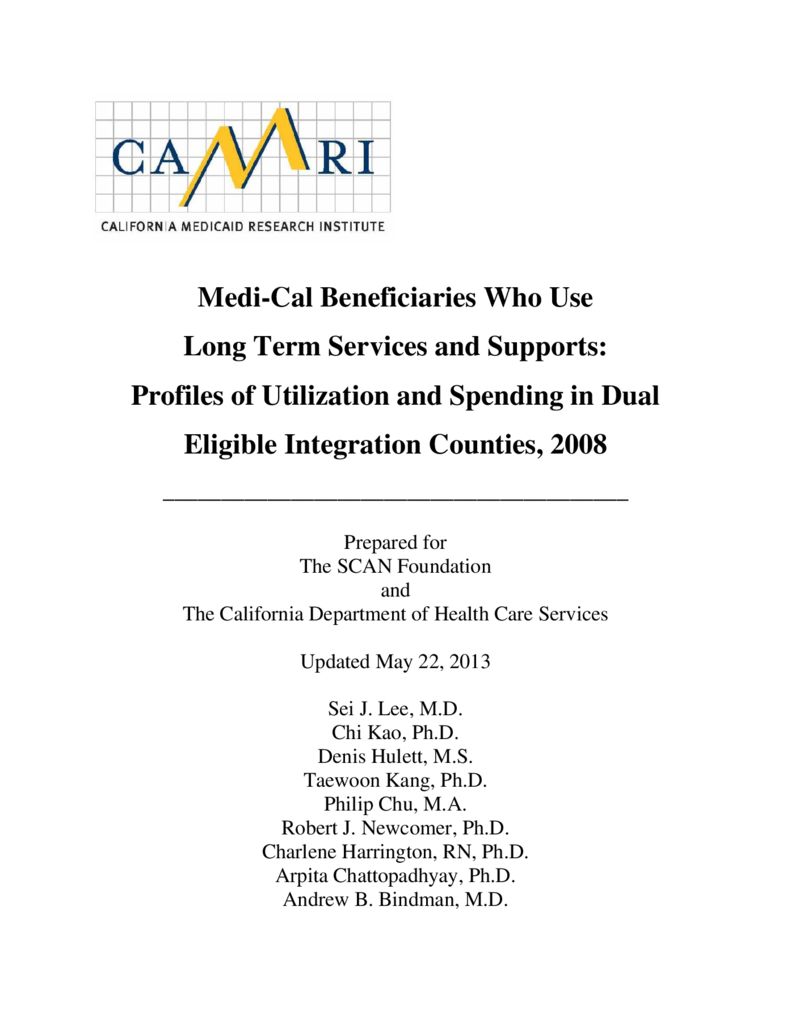CAMRI: Medi-Cal Beneficiaries Who Use Long Term Services and Supports (Updated)
summary
The California Medicaid Research Institute (CAMRI) developed an integrated and longitudinal database containing Medi-Cal and Medicare claims and assessment data of LTSS recipients in California in 2008. CAMRI’s integrated database provides a unique opportunity to look at characteristics and program spending across the entire care continuum for beneficiaries with LTSS needs within Medi-Cal and for dual eligibles across Medicare and Medi-Cal. This report focuses on LTSS use and spending in the eight duals demonstration counties.
Date Updated: 02/11/2013Background
California is one of fifteen states that received a $1 million design contract from the Centers for Medicare and Medicaid Services (CMS) to develop plans to better integrate the financing and services of Medi-Cal (California’s Medicaid program) and Medicare for those dually eligible for both programs (often referred to as dual eligibles or Medicare-Medicaid enrollees, MMEs). The state’s efforts resulted in the passage of the Coordinated Care Initiative (CCI), authorizing a three-year demonstration beginning in 2013.1 Eight counties were selected as the demonstration sites: Alameda, Los Angeles, Orange, Riverside, San Bernardino, San Diego, San Mateo and Santa Clara…
Download the publication for all visuals and complete references.
Continue Reading
This is the third report coming from the California Medicaid Research Institute (CAMRI) project entitled: Comprehensive Analysis of Home- and Community-Based Services in California. The report describes Medicare and Medi-Cal spending for those beneficiaries using long-term services and supports funded by Medi-Cal.
In this paper, the National Committee for Quality Assurance (NCQA) discusses prior integration efforts; introduces a model for integrated entities and a framework for assessing and promoting quality of integrated care; and explores the challenges to implementing and achieving the goals of person-centered, integrated care for Medicare-Medicaid beneficiaries. They use the word “framework” to describe the key concepts underlying the structure and process measures; it can also be expanded to include the content of performance measures as companions to the structure and process measures.
On March 27, 2013, the State of California and the Centers for Medicare and Medicaid Services (CMS) formalized a Memorandum of Understanding (MOU) to establish a Federal-State partnership to implement the Dual Eligibles Integration Demonstration, also referred to as Cal MediConnect. This Fact Sheet provides background information about Cal MediConnect and summarizes the key points of the MOU.


